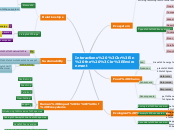Interactions
in the
Environment
Ecosystem
An ecosystem includes all of the living thing in a given area
Types of Ecosystems
Tropical Rainforest
warm/wet/lots of vegetation
Temperate
all seasons/lots of vegetation
Grassland
dry/lots of grass
Desert
hot/dry/little vegetation
Tundra
cold/little vegetation
River
water
Coral Reef
warm ocean/lots of vegetation
Mountain
high up/lots of vegetation
Food Chains
Sun
Gives energy to plants to grow
Producer
plants: give energy to consumers to grow
Consumers
Herbivore
Eat plants for energy
Carnivores
eat other animals for energy
Omnivores
eat both plants and animals for energy
Decomposers
get energy by breaking down dead plant and animal matter
Ecological
Succession
Ecological Succession
the process of change of species in an ecosystem
Primary Succession
happens in a lifeless area or areas where the soil is not capable of sustaining life
Secondary Succession
happens in an area where a community that previously existed has been removed
Relationships
Elements
Biotic
living thing in an ecosystem
Abiotic
non-living thing in an ecosystem
water
sunlight
temperature
Living Things
Producer
produces its own energy
plants from sun
Consumer
a living thing that consumes energy from a producer
Decomposer
a living thing that breaks down chemicals from producers and consumers
Sustainability
Sustainability
avoiding the depletion of natural resources
Biodiversity
the variety of life in an ecosystem
a healthy ecosystem has many different species of plants and animals
Human Impact
of Ecosystems
Overfishing
Poaching
Pollution
Clear-Cutting
Logging
Introducing invasive species
Taking away native species
Land conversion
Using pesticides on crops
